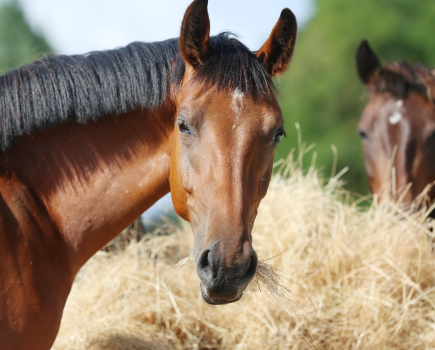Penetrating injuries can be very distressing for both horse and owner. In the majority of cases, the wound can be managed very successfully, but there are several types of penetration injury that may be more serious than they appear.
Equine vet Katie Brickman, who graduated from the Royal Veterinary College in 2013 and runs the Ripon branch of Minster Equine, explains the main four.
1 Wounds penetrating synovial structures
Puncture wounds are a common way for bacteria to enter a synovial structure in the horse. Synovial structures are classified as joints or tendon sheath structures and the most common site for penetration to occur
is on a limb.
Unfortunately, a horse’s synovial structures have a limited blood supply, making them inefficient at removing bacteria once contamination has occurred. If treatment is not administered promptly, a severe amount of inflammation develops that can lead to cartilage, ligament, tendon or bone damage, which may result in permanent lameness.
Diagnosing a synovial injury
- Some horses will show signs of lameness on physical examination, but this is not always the case.
- Usually, the horse will show a normal heart rate and temperature.
- Your vet will make an initial assessment and may suspect possible synovial penetration based on the location of the injury.
- The wound should be clipped and cleaned to ensure the area is sterile.
- Your vet may take a swab to ensure the correct antibiotic treatment is given.
- X-rays will be taken of the affected joint and an ultrasound scan of the area may be performed.
- A sample will be taken to check for sepsis.
- Sometimes, sterile saline may also be injected to see if it comes out of the puncture wound.
Treatment
Successful treatment of a septic synovial structure involves flushing out the structure with large volumes of fluid. This usually involves hospitalisation to allow general anaesthesia to be performed and surgery to be done in a sterile manner.
After surgery, the horse requires bandaging in order to keep the area clean and is put on a course of antibiotics.
2 Penetrating wounds to the foot
Due to the presence of multiple synovial structures, puncture wounds to the foot can be very serious.
The most common cause of a penetrating foot injury is when a horse stands on a nail, often in the field. When this is discovered, your first instinct as an owner might be to pull the nail out but, if possible, leave the nail or foreign body in place and ring your vet immediately.
If the object is still in your horse’s foot, X-rays will give your vet a much better idea of whether penetration of a synovial structure has occurred.
If the object has been removed, it is more difficult to determine this and your vet will need to take multiple samples from different synovial structures, as well as taking X-rays of the site of penetration using a sterile probe.
Pedal osteitis
Foot penetrations can also cause damage to the pedal bone, which won’t be immediately obvious from initial X-rays.
Damage to the pedal bone can lead to a condition known as ‘pedal osteitis’, in which an area of the bone becomes infected.
This condition can take weeks to become visible on X-ray and requires surgical resection of the infected bone.
3 Penetrating wounds to the thorax
The most common cause of thoracic penetration in the horse is accidents involving gates or fencing. These wounds are often large and look severe, making them very distressing for an owner to be confronted with.
Many of these wounds will not penetrate into the thoracic cavity, but it’s possible for complications to occur, such as pneumothorax (air within the chest cavity), hemothorax (blood within the chest cavity) and emphysema (air pockets under the skin).
As these wounds are usually large, your vet will assess the injury and remove any dead or damaged tissue before washing out the region to try and reduce contamination.
Depending on the size of the wound, the tension the skin is under and the degree of infection, your vet may either close the wound with sutures, or leave part of the wound open to heal by secondary intention. In this situation, the vet will also prescribe broad-spectrum antibiotics, as these wounds are usually sustained from ‘dirty’ items like gate posts.
4 Penetrating wounds to the abdomen
Penetrating wounds to a horse’s abdomen can be difficult to deal with. Even small wounds can introduce bacteria into the abdominal cavity, requiring surgery to resolve infection.
If the wound does not penetrate the abdominal cavity but instead passes through the skin, fascia and muscle, your vet will thoroughly clean the area, then often place a belly bandage on the abdomen to provide support.
If penetration has occurred, your horse should be hospitalised to allow for examination of his internal organs. In severe situations, the small intestine can eviscerate (fall out) of the abdominal cavity, which is an extremely serious situation.
Wounds of this severity carry a guarded prognosis and, unfortunately, all patients with abdominal penetrations are at risk of post-surgical peritonitis and persistent incisional infection.
Your Horse’s First Aid Week is brought to you in partnership with Absorbine









